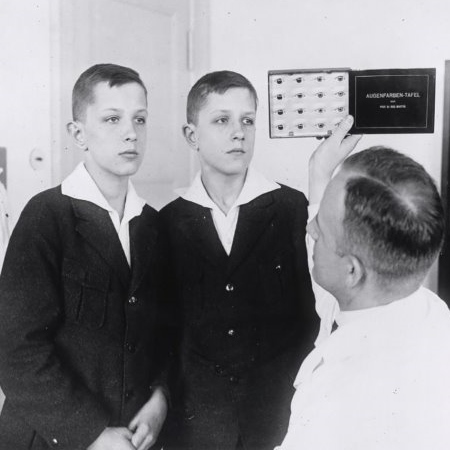click to dowload our latest edition
CLICK HERE TO SUBSCRIBE TO OUR NEWSLETTER


Published
6 years agoon
By
adminMOIRA SCHNEIDER
Jansen is the former vice-chancellor of the University of the Free State and now a distinguished professor in the faculty of education at the University of Stellenbosch. “In Mandela’s country that many others look towards, regarding our incredible attempts to build one nation, every now and again there are threats to it,” he said.
“In January this year, a doctor in Mokopane, Limpopo, was found to run a surgery in which patients are treated by race… from admissions to treatment to facilities. We still have publications about tuberculosis as a Coloured disease when, in fact, it is a disease of poverty and of socio-economic conditions under which people live, [as if] there is something inherent in race that explains patterns of diseases rather than that they are externally located in the environment.
“Just today, the front page of the Sunday Independent reports on a black leader and his group who threatened to burn down a theatre playing a movie on relations between Indians and Africans.”
Mentioning the Life Esidimeni tragedy – in which 144 mentally ill patients died from causes such as starvation and neglect, after having been moved to ill-equipped psychiatric facilities – Jansen said there were different standards of treatment for different psychiatric patients. “So, just below the skin of South African politics lies this monster constantly threatening to come out.
“We fool ourselves that, because we have this glorious Constitution, we have dealt with this issue of race. There is a need for us to be alert to those who exploit our perceived differences for political ends,” he warned.
“One has to constantly be alert and learn from the past so that when we say ‘never again’, we must mean ‘never again’ – and this means building interracial community in peace time.”
Jansen expressed his delight at the presence of schoolchildren in the audience and praised the Holocaust Centre for its efforts in attracting the next generation, saying this bodes well for the future.
Deadly Medicine is a travelling exhibition produced by the US Holocaust Memorial Museum (USHMM) in Washington DC. It is on the first leg of its 18-month tour of South Africa and Namibia, and this marks the first time that the US museum has featured an exhibition on the African continent. It has allowed the SAHGF to adapt the exhibition, and has supported the project financially.
The exhibition shows how the Nazi regime under Adolf Hitler aimed to change the genetic make-up of the population through measures known as “racial hygiene” or “eugenics”, and the role that medically trained experts played in helping to put these policies into practice.
“Deadly Medicine: Creating the Master Race has special relevance in contemporary South Africa, specifically because of issues about medical ethics that continue to this day,” Richard Freedman, director of the SAHGF, told the audience at the launch. “This exhibition is a reminder of the inherent worth of each person and the tragic consequences when this is forgotten, as we have just witnessed in the Life Esidimeni tragedy.”
He said it was important that the exhibition made connections to South Africa’s history and drew the audience’s attention to a section about South Africa, designed specially for this tour, that was informed by the research of Dr Handri Walters.
Dr William Meinecke Jr, a historian at the USHMM, introduced the exhibition. He noted that no other profession had worked as closely with the Nazi state as the medical profession, half of whose members had joined the Nazi Party.
The state had encouraged people it defined as physically fit to have as many children as possible, and the so-called unfit not to procreate.
On display is a letter from the Reich interior ministry instructing midwives and physicians to register all children born with severe birth defects. The letter’s recipients were unaware that the collected information would be used in the paediatric “euthanasia” programme.
We read that doctors and nurses used a number of methods to kill selected disabled children, from overdoses of the sedative Luminal to starvation, deadly injections of morphine and asphyxiation by carbon monoxide.
Another panel tells us that 400 000 Germans diagnosed as “feeble-minded”, mentally ill or with other conditions assumed to be hereditary, were surgically sterilised between 1934 and 1945.
Turning to South Africa, the special panel created for this exhibition is titled Human measurement in South Africa, Stellenbosch University 1925 – 1952. On display are German anthropologist Rudolf Martin’s Eye Colour Table, designed in 1903, and German eugenicist Eugen Fischer’s Hair Colour Table, designed in 1907. There is also a set of calipers to measure the human head.
By 1917, the eye and hair colour tables were offered for sale to so-called scientists and researchers worldwide.
On arrival here in 1925, the collection was put to use measuring white Afrikaner students, Coloured males in Stellenbosch and, until 1952, a sub-group of the Khoisan. The objects were initially employed in studies of human measurement at Stellenbosch University for the purposes of racial categorisation.
There is an ancillary programme of events for the next month relating to medical and legal issues, including a lecture titled Ethical challenges for health professionals by Professor Solly Benatar and Professor Anton van Niekerk.
• The exhibition is on at the Cape Town Holocaust and Genocide Centre until March 26. It will then travel to the Holocaust centres in Johannesburg and Durban and to medical schools and universities around the country before transferring to Namibia.
